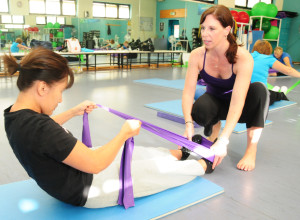Spinal cord injuries are among the most serious and life-altering injuries a person can sustain. The spinal cord, a complex bundle of nerves, is the primary pathway for communication between the brain and the rest of the body. When it’s damaged, a patient could be...
People who suffer from varicose veins, chronic venous insufficiency (CVI), and other related health conditions know that their symptoms involve more than just cosmetic concerns. They also frequently cause pain, swelling, and more serious health problems. For these...
Our smartphones, tablets, and laptops have connected us to the world in ways that we could never have imagined. We carry our offices, our social lives, and our entertainment with us everywhere we go. But this constant connectivity often comes with a trade-off, one...
Treating Muscle Sprains and Strains

As an athlete, you constantly put your body through physical activity that causes wear and tear. Some of the most common injuries you may suffer include sprains and strains. While these injuries aren’t usually severe, they can be painful. Fortunately, there are many ways to deal with these types of injuries that will have you feeling better and get you back in the game as soon as possible.
A sprain is the stretching or tearing of a ligament, which is the fibrous tissue that connects bones to a joint. It’s possible to sprain more than one ligament at a time.
A strain, on the other hand, is an injury to a muscle or a tendon, which is a fibrous cord of tissue that connects muscle to bone.
Learn more about muscle sprains and strains and the proven treatment methods that allow you to heal from your injury.
Treatment
The RICE method should be used when treating a sprain or a strain. This treatment method helps to minimize swelling and decrease pain. To perform the RICE method, you should do the following:
• Rest: Avoid physical activity and exercise for a few days, and avoid putting weight on the injury. This helps the ligament, muscle, or tendon heal. Putting stress on the injured area could cause the injury to worsen.
• Ice: Apply an ice pack to the injured area for 20 minutes at a time for about four to eight hours a day. Avoid keeping the ice on the area for more than 20 minutes, and keep a towel between the skin and the ice pack.
• Compression: Wrap the injury with an ACE bandage so it fits snugly but not too tightly. If you’re not sure how to do this, ask your physician how to wrap your injury.
• Elevation: Prop your ankle, knee, elbow, or wrist so it’s above your heart. This will help to decrease swelling.
Casting
If the RICE method doesn’t improve your condition after a few days, your doctor may recommend a cast. It will stabilize your injury and give the ligaments, tendons, and muscles the opportunity to heal without being disturbed.
Surgery
In severe cases, a sprain or strain could cause the ligament or tendon to tear, which means it won’t be able to heal on its own and surgery is required. During the surgery, your doctor will reattach the ligament or tendon to the bone or muscle.
Rehabilitation
Whether you have a cast or have undergone surgery, it’s likely that rehabilitation will be necessary to help you restore range of motion. Your physical therapist will help you perform various stretches and repetitive exercises that will help you use your ankle, knee, or wrist again as well as strengthen it.
As an athlete, you probably experience your fair share of sprains and strains. This information will help you feel better quickly.
For more information about keeping your body healthy and performing at your best, download our eBook The Athlete’s Guide to Reaching Peak Performance and Preventing Injury.


